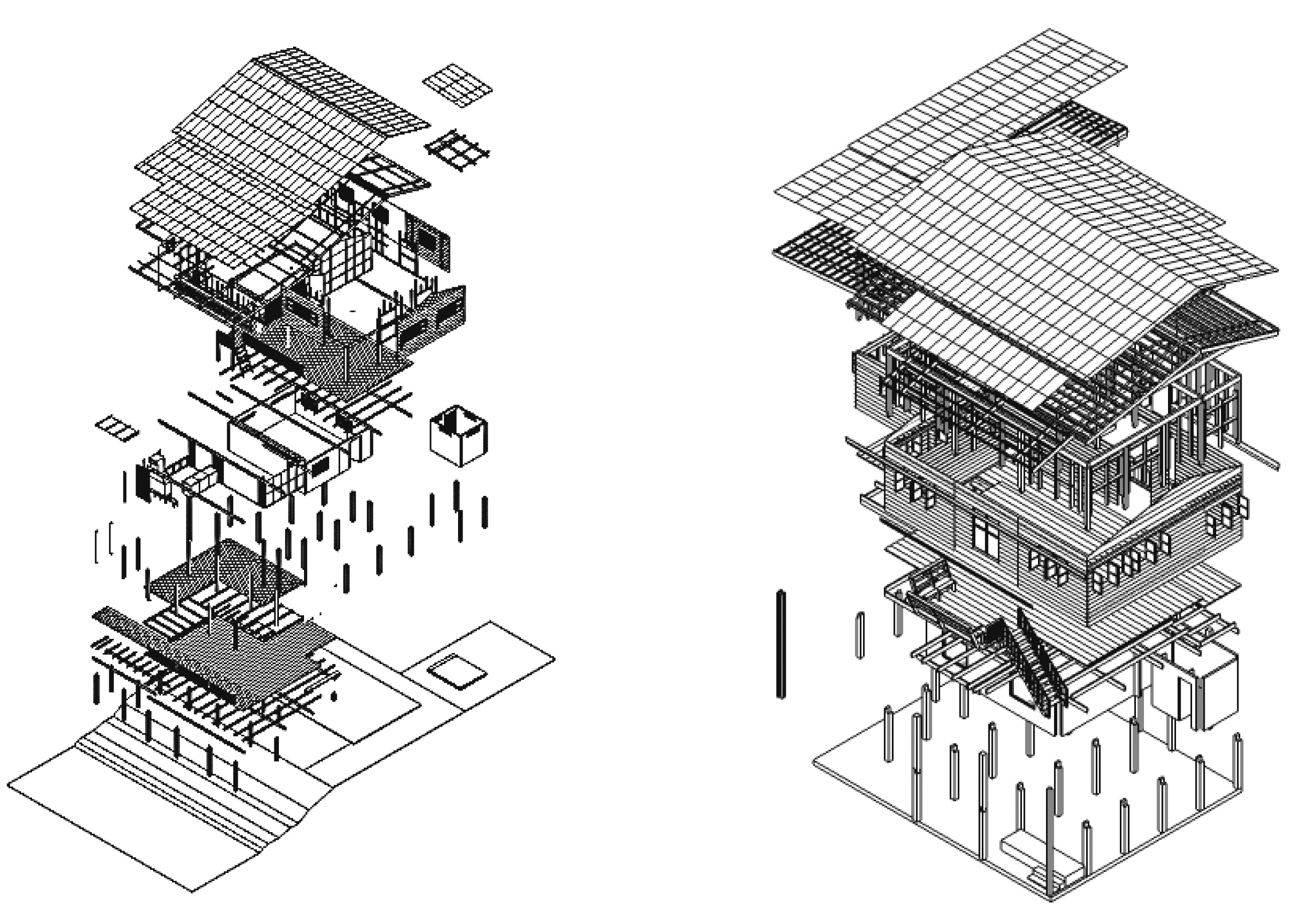Characteristics of Low-income Housing at Rangsit Area in Pathum Thani Province: The Expansion and Modification of National Housing Projects
Main Article Content
Abstract
To purpose guideline for proper affordable housing development, the objective of the study is to create an understanding of characteristics of low-income residents. Expansion or modification normally occurs to cope with need of space, way of life and change in family structure. It is also to make the typical unit appropriating with various resident’s background. The study is a descriptive research with data collection by field-survey, interview, observation, and questionnaire from 120 households at Rangsit area in Pathum Thani province. The typological analysis demonstrates type, period, and place. The appearances are concluded as follows: 1) Local houses are typically raised houses with high columns and extensions. The additional parts have been constructed for many times relating to family size and budget. Shelters are added at the front of the land for commercial purpose; 2) Single houses in Ban Uer-atorn Project are constructed on very small size of land. Residences always wanted to expand and modify on land around their houses but are limited with prefabrication construction; 3) Condominiums in Ban Uer-atorn Project are not proper for low-income Thais from various reasons. Residences rarely adjust their units because of prefabrication construction and strict regulations; and 4) National housing flat (before the starting of Ban Uer-atorn Project in 2003 C.E.) is found with many forms of adaptation. These ways have happened by conventional in-situ construction and flexibility of building manager.
Downloads
Article Details

This work is licensed under a Creative Commons Attribution-NonCommercial-NoDerivatives 4.0 International License.
All material is licensed under the terms of the Creative Commons Attribution 4.0 International (CC-BY-NC-ND 4.0) License, unless otherwise stated. As such, authors are free to share, copy, and redistribute the material in any medium or format. The authors must give appropriate credit, provide a link to the license, and indicate if changes were made. The authors may do so in any reasonable manner, but not in any way that suggests the licensor endorses you or your use. The authors may not use the material for commercial purposes. If the authors remix, transform, or build upon the material, they may not distribute the modified material, unless permission is obtained from JARS. Final, accepted versions of the paper may be posted on third party repositories, provided appropriate acknowledgement to the original source is clearly noted.
References
Amweo, T. (2002). Cheewit Rimklong Rangsit. In Soontravanich, C., Panswad, T., Chiwachaisak, W., & Wankaew, S. (Eds.). Neung Roi Pee Meang Thunyaburi 2545 A.D. (pp. 72-75). Pathumthani. n.p.
Arsvai, S. (1987). Prawat Klong Rangsit Karn Pattana Teedin Lae Polkratop Tor Sangkom from 2431 A.D. to 2457 A.D. Bangkok: Thammasat Press.
Bumrungphuej, W. (1996). Housing Growth on Rungsit-Nakornnayok Road in the Area between Klong 1st to Klong 7th, Patumthani Province. Degree of Master of Housing Development Department of Housing Development, Graduate School, Chulalongkorn University.
Chantavanich, S. (1995). Kan Koet Lae Kan Plianplaeng Khong Chumchon Nai Khet Khlong Rangsit. In Soontravanich, C., Panswad, T., Chiwachaisak, W., & Wankaew, S. (Eds.). Neung Roi Pee Khlong Rangsit(pp. 308-333). Bangkok: Chulalongkorn University.
Chantavanich, S. (2002). Karn Damrong Cheewit Kub Sathabun Thang Sangkom. In Soontravanich, C., Panswad, T., Chiwachaisak, W., & Wankaew, S. (Eds.). Neung Roi Pee Meang Thunyaburi 2545 A.D. (pp. 26-43). Pathumthani. n.p.
Inpuntung, V. (2012). Transformation of Lao Song’s Houses. Bangkok: Usakane.
Punpairoj, P. (2002). The Impact of the Establishment of University to Local Community Environment: Toward an Indigenous Transformation. Pathum Thani: Thammasat University.
Rungsirisaengrat, W. (2002). Tung Rangsit Laeng Palit Kao Phea Karn Song Oak. In Soontravanich, C., Panswad,T., Chiwachaisak, W., & Wankaew, S. (Eds.). Neung Roi Pee Meang Thunyaburi 2545 A.D. (pp. 52-67). Pathum Thani. n.p.
Temiyabandha, V. (2012). Roop Bab Reuan Pak Arsai Peantin Kong Chumchon Chao Tai Cheasai Mon Yan Klong Mon Huatake Umphur Ladkrabung. Bangkok: Usakane.
Witthayakomonlert, K., et al. (2010). A Research for Conservation and Renovation Guideline of Toong-Laung-Rungsit Water Base Community. Pathum Thani: Rajamangala University of Technology Thanyaburi.


